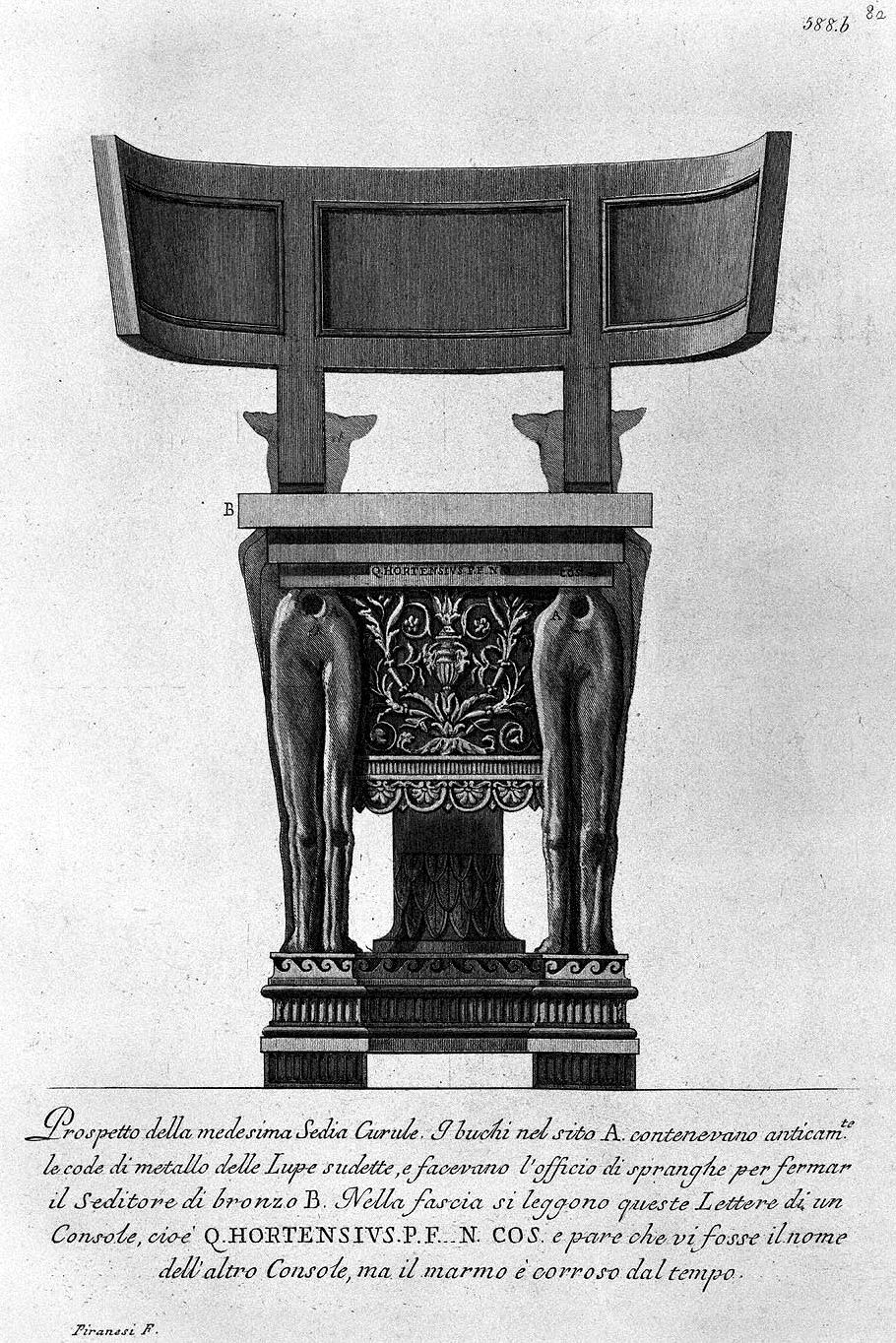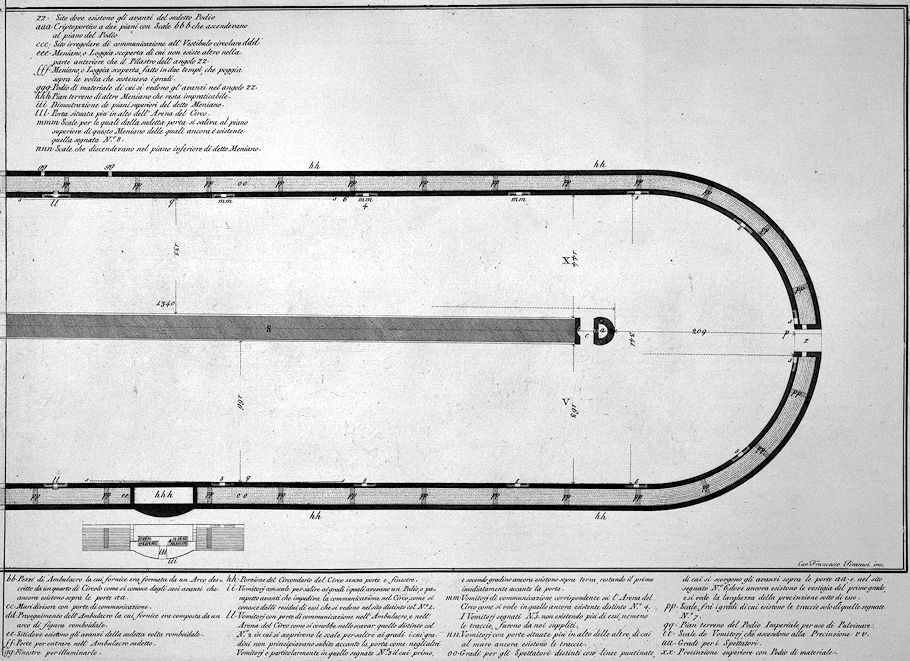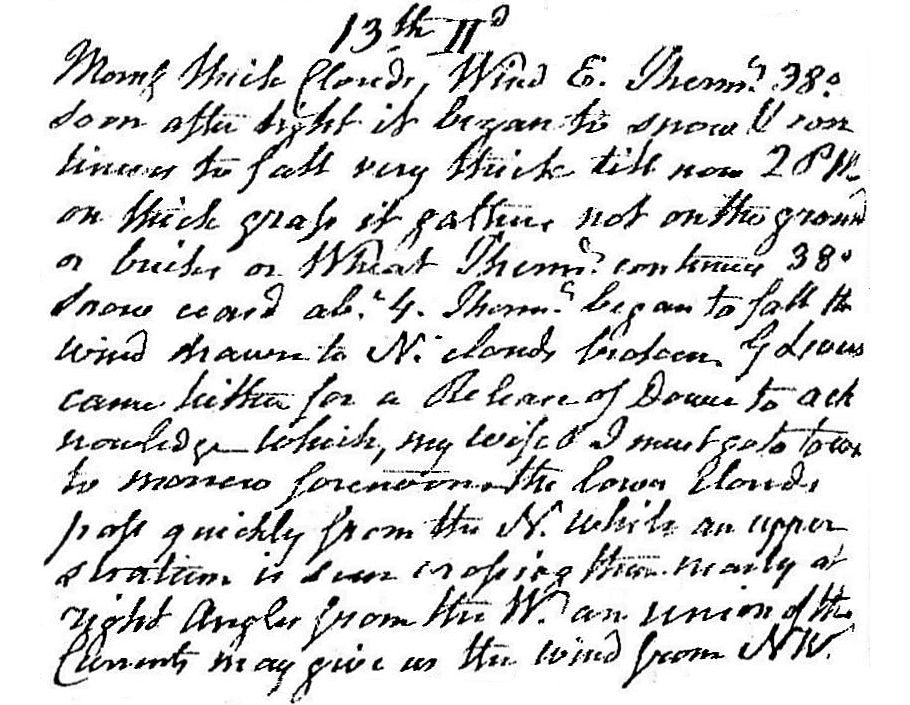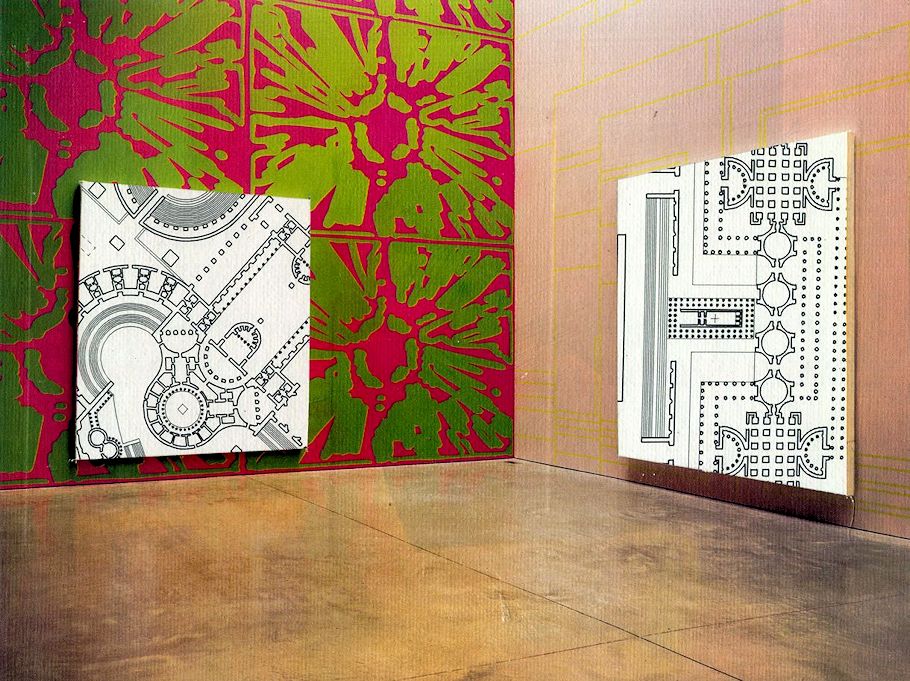13 April 1778 Monday
Vases, Candelabra, Grave Stones, Sarcophagi. Tripods, Lamps and Ancient Ornaments volume II

A View of the Curule Chair. B Fašade of the Supedaneo supported by corbels, decorated with various carvings of fronds and arabesques. C Step to go up to the supedaneo.
Piranesi F.
27-28 y.o. Francesco Piranesi 1786
Icnografia del Circo de Caracalla fuori della Porta Capena in oggi S. Sebastiano

bb. Pieces of Ambulacro whose arch was formed by an Arch described by a quarter of a circle as known from its remains which still exist above the doors aa.
cc. Partition walls with communication doors.
dd. Continuation of the Ambulacrum whose arch was composed of a rhomboidal arch.
and and. Sites where the remains of the aforementioned rhomboidal vault exist.
ff. Doors to enter the aforementioned Ambulacro.
day Windows to light it.
hh. Portion of the Circondario del Circo without doors and windows.
ii. Vomitory with stairs to climb to the ranks which had a podium, or forward parapet which prevented communication in the circus; as is known from the residues of them that can be seen on the separate site with No.1.
ll. Vomitory with communication doors in the Ambulacro, and in the Arena of the Circus as known in the excavation of the separate one with No.2 in which the stairs were discovered to go up to the steps whose steps did not start immediately next to the door as in the other Vomitory and particularly in the one marked No.3 whose first, and second steps still exist above ground, the first remaining immediately beside the door.
mm. Vomiters of corresponding communication on the Arena of the Circus, as seen in the still existing distinct No.4; The Vomitorj marked No.5, since they no longer existed, not even the traces, were replaced by us.
nos. Vomitorj with doors located higher than the others, traces of which still exist on the wall.
oo. Ranks for Spectators distinct with putinated lines, the remains of which can be seen above the doors aa. and at the site marked No.6 where the vestiges of the first grade still exist, and the width of the enclosure below it is seen.
pp. Scales between degrees of which traces exist only of those marked No.7.
qq. Ground floor of the Imperial Podium for Pulvinare use.
tt. Scale de Vomitorj, which ascend to the Precinction vv.
uu. Ranks for Spectators.
xx. Upper precinct with material podium.
zz. Site where the leftovers of the aforementioned Podium exist
aaa. Two story cryptoporticus with Stairs
bbb. that ascended to the level of the Podium
ccc. Irregular communication site at the circular vestibule ddd.
eee. Meniano, or open Loggia of which there is nothing in the front other than the Pillar of the corner zz.
fff. Meniano, or open Loggia built in two stages, which rests on the vault that supported the steps.
ddd. Material podium of which the remains can be seen in the corner zz.
hhh. Ground floor of another Meniano which remains impracticable.
iii. Demonstration of the upper floors of the said Meniano.
lll. door located higher than the Circus Arena.
mmm. Stairs for which from the aforementioned door one went up to the upper floor of this Meniano of which the one marked No.8 still exists.
nnn. Stairs that descended to the lower floor of the said Meniano.
Cav. Francesco Piranesi inc.
13 April 1812 Monday

Morning thick clouds. Wind E. Therm. 38░. Soon after light it began to snow and continues to fall very thick till now 2 PM. On thick grass it gathers, not on the ground or bricks or wheat. Therm. continues 38░. Snow ceased about 4. Therm. began to fall. The wind drawn to N, the clouds broken. G L.... came hither for a release of D.... to acknowledge which. My wife and I must go to town tomorrow forenoon. The large[?] clouds pass quickly from the N, while an upper stratum is soon[?] crossing them mainly at right angles from the W. An unison of the currents may give us the wind from NW.
13 April 2005
Architecture displaying movement?
And what exactly is time without the movement of matter through space?

John the Baptist Piranesi Room 1
13 April 2009
Re: Relics of the "true" cross?
Gene,
I wasn't sure how much you were already into the subject, but your questions do aim at the heart of the matter. Unfortunately, there are no precise historical answers to most of your questions. Jacobs' reply provides a clear synopsis of what is known for sure. Cyril's letter to Constantius is the earliest reference to the discovery of the Cross.
I have my own theories as to "what happened" back then, and it involves Ambrose breaking a law of silence, instituted by Constantine, regarding Helena and the Cross. The main reason for the law of silence was to deprive the Church hierarchy of the "power" of the True Cross, a power that would be greater than the Emperor himself. Basically, all the Church Fathers (from c.326 to 386) knew of Helena and the Cross, but they weren't allowed to say anything about it (at least not without then being exiled).
I see Santa Croce at Ravenna as a reenactment of Santa Croce in Gerusalemme--essentially Galla Placidia reenacting Helena Augusta, a later Christian Empress reenacting the 'original' Christian Empress. Helena was a "church builder" and Galla Placidia continued the tradition. In a sense, Santa Croce at Ravenna provides evidence for the prior existence of Santa Croce in Gerusalemme and its own 'legend'.
Anyway, I haven't focused on any of this stuff in a number of years, and my recollection of it all is starting to get sketchy. I am planning to work on it all again soon, so if you have any other questions I'd be happy to entertain them.
13 April 2023 Thursday
. . . . . .
|